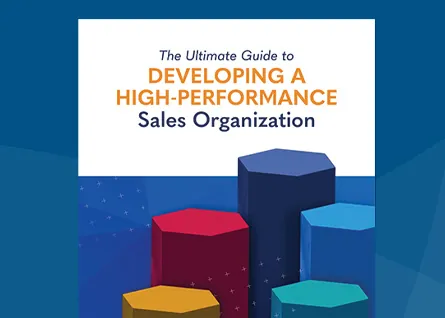What Are Your Options When Prospects Go Silent?

When a sales rep asks us point-blank, ”What is the best way to follow-up with a prospect that goes silent?“ they are not asking a hypothetical question. It’s a real question we hear often, and we know sales reps are not wanting to hear a vague reply like, ”It depends on your situation.” They are looking for practical advice to a real-world sales problem. In this article, we will explore why prospects go silent, ways to handle it, and most importantly, solutions to help prevent being on the receiving end of the silent treatment.
Why Prospects Go Silent
When prospects are comfortable with their current situation, they have zero motivation to change. The silent treatment from a prospect is an indication that they are comfortable with the status quo and returning emails, voicemails, and LinkedIn messages is not worth the effort. If the prospect’s office was on fire and you had the only fire extinguisher, you can bet, your phone would be ringing. It’s called “need” and without a legitimate need, one which the prospect believes you can solve (trust), selling can feel like swimming against the current at Niagara Falls.
In today’s competitive sales environment, companies devote vast resources to generate demand and leads for their sales teams. But not all prospects that are generated are ready to have a conversation with sales just yet. Sometimes, they’ll need to be nurtured by marketing to reach that status. For example, a website visitor who downloads a gated white paper or or another piece of collateral may just do preliminary research. Sure, intent has been established, but they may not be in a position to buy yet.
A prospect receiving what they needed and then going silent is a common scenario when a potential buyer is just starting their research. If the prospect is further along in the sales cycle and goes silent, for example someone who has already received a presentation, that is a different scenario. In this case, the prospect either wants to avoid conflict by saying no or may have never had the authority to say yes in the first place. If, however, you provided pricing without receiving a commitment on the next steps, the silent treatment at this stage may mean they are looking around and might be trying to get a better price from your competitor. As you can see, the silent treatment early in the sales cycle is not as detrimental as the silent treatment at the later stages.
Most companies have a CRM full of prospects who have never had a conversation with a sales rep. These so-called prospects are early in the sales cycle and are often leads generated at tradeshows, website opt-ins, social media, and a variety of other sources that marketing departments utilize. The challenge for us sales reps is that we are being tasked with connecting and having a business conversation with the prospect and move the deal forward in the sales cycle. In the next section we will explore simple solutions to connect and start a conversation with these silent prospects.
What to Do When Prospects Go Silent
Initiating a response from a silent prospect requires a basic understanding of a few human psychology principles. Principle number one is knowing that in general, people will prefer to avoid pain rather than to receive a perceived benefit. Principle number two is that people will resist being pulled but they are open to being led. Finally, principal number three is, as humans, we have a built-in default fear of missing out. These concepts are critical to remember when you are contacting silent prospects. Let’s review each principle and connect it to a real-world selling situation.
Most sales reps default to talking about their products or service’s benefit before a real need is addressed. This style of selling may have worked twenty years ago, but today’s sophisticated buyers filter the message as noise, because they hear it from multiple vendors on a weekly basis. For example, this is a message a prospect can easily ignore:
Mr. Prospect, I was reaching out to see if you have time to schedule a quick call to learn how our services can help you sell more widgets faster. I’d love to show you how our services could benefit your company.
The benefits are so obvious, everyone uses them. Just substitute “sell more” with “improved ROI,” “faster lead times,” or whatever benefit you can think of. The other problem with thinking a prospect will respond to your benefit statement is that it discounts what they have been doing without your help. In other words, they will say to themselves, “we do a pretty good job of selling already and we’ve been in business X number of years” and quickly delete your message.
The alternative is to begin with a problem that you know your customers are likely living with or at least worrying about:
Mr. Prospect, have you ever calculated the cost of losing just one widget sale per month? We recently helped ABC Company generate an additional two sales per week and since your company is similar, I thought you would benefit from what we worked on.
Notice, first we are not telling the prospect about a benefit of our product we are asking the prospect to consider the pain of losing a deal. Let’s say the widget is netting the organization a $2,000 profit per sale. If you’re missing out on just one deal a week, that quickly adds up to $104,000 in lost profits per year. A $104,000 pain is worth a twenty-minute return call. Presenting benefits (selling more) as a pain (losing sales) your prospects want to avoid, is one simple way to initiate a conversation with a silent prospect.
The second principle requires sales reps to do the opposite of what they want to do. The old-school selling mentality of follow-up until they buy or die needs to go the way of the dinosaurs. Because the harder you push, the more prospects will resist. In other words, ditch the pitch. Stop pushing the appointment and start leading. If we really want to serve our clients, we need to furnish them with strategic insights, timely advice, or options they have not considered. Remember the status quo is the enemy and a prospect at rest will remain at rest until acted upon by an outside force.
The hard reality is that if prospects go silent on us, we have not provided them with a compelling reason to respond. It is wishful thinking that they are sitting by their phone, waiting for our call. We can call, email, and text every day, but until we provide a compelling reason, our messages will be ignored. For example, something as simple as this can be more effective than dozens of calls:
Mr. Prospect, last month you contacted us regarding our widget. I want to be sure I didn’t drop the ball or let something fall between the cracks, but we recently upgraded our widgets and I thought you’d be interested.
This message reminds the prospect they reached out, but instead of pushing, we assume that we “dropped the ball.” In other words, you are making it easier for the prospect to respond because you aren’t putting pressure or a guilt trip on them. Many times, they reach out with an apology, “Sorry I haven’t gotten back to you sooner, it wasn’t your fault, I was on a vacation. What’s the upgrade on the widget?”
The third principle to leverage to initiate a silent prospect’s response is their natural fear of missing out. You’ve heard of FOMO and it is an effective strategy to use when nothing else has worked. The primary method is to use scarcity or a time deadline. For example, you could inform your prospect that you can only onboard ten new clients a month and you already have nine with a dozen calls still to make. Another example would be a price change at a certain date, and you didn’t want them to miss out this month.
The key for FOMO to work is that it has to be genuine, and you can’t use it more than once. For example, if your company installs products and the next available install is two months out, this can create a compelling reason for a prospect to initiate a conversation. Alternatively, if your prices are going up next quarter, reaching out to prospects before the increase is a legitimate reason. When you use FOMO ethically and sincerely, it can be a powerful strategy to re-start a conversation with a silent prospect.
How to Avoid a Prospect From Going Silent
We’ve all heard, “An ounce of prevention is worth a pound of cure.” Well, the same goes for handling a silent prospect. In our interactions with prospects, we want to remove all possible friction between ourselves and the prospect. In other words, we want to make it effortless and pressure-free. What happens when you squeeze something really hard with both hands? If pops right out of your hands. Often times, as sales reps we get so excited, we have a new prospect and we squeeze too hard, too fast, and their natural reaction is to resist.
One simple strategy is to have a link to your online calendar in your signature. If you require the prospect to ask for your availability, it’s just another hurdle they have to jump over. Another way to prevent prospects from going silent is to utilize video. Sending a personal video to a new prospect and sharing strategic insights can be a great way to have prospects respond. If you have prospects going silent and have not tried video, it’s a tool that can increase your responses and initiate a business conversation with shy prospects.
In Conclusion
Sales reps learn both on the job and from the job. The key is to always be learning. If your prospects are not responding, do a little self-reflection and review the above strategies to see if you can sharpen your messages and skills. If you need additional help, our team has successfully implemented hundreds of value-focused sales training programs that enable sales professionals with the skills and strategies to stimulate interest, build trust, and improve their sales effectiveness.

- Account Planning (11)
- Awards (50)
- Client Testimonial (37)
- Personal Branding (19)
- Podcast (11)
- Research (68)
- Sales Career Development (85)
- Sales Coaching (154)
- Sales Consulting (133)
- Sales Culture (164)
- Sales Enablement (340)
- Sales Leadership (108)
- Sales Management (242)
- Sales Negotiation (16)
- Sales Prospecting (124)
- Sales Role-Playing (18)
- Sales Training (229)
- Selling Strategies (255)
- Soft Skills (67)
- Talent Management (92)
- Trusted Advisor (27)
- Virtual Selling (41)
- Webinar (10)





























